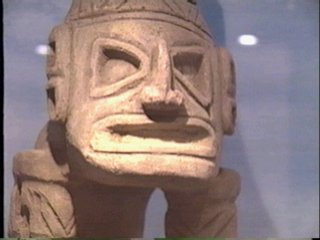History
of the Tainos
Among
the groups and towns that The Antilles inhabited before the Discovery of
America, were those of Santo Domingo's island who reached a bigger
development degree. Because among the thousands of objects that the
archaeologists have been able to pick up and study, it removes the notion
very clearly that the Taina society ended up being unwrapped in a
civilization degree comparable to the superior Neolithic of the old
European towns.
The
news that the first columnists from India left about the life, the customs
and the material culture of the many aboriginal groups that populated the
island and territories of the great circuncaribe region.
Pointed
out that in some moment of their social evolution the Tainos began to
develop certain cultural singularities that finished differentiating them
of the South American groups of the forests of the Orinoco and the Amazons,
where they originally proceeded.
The
Tainos
were sedentary and they ended up becoming
farmers to
make a living, at the
same time of they
fished
and hunted,
with which they conserved those cultural features that had shown to be
functional in the process of adaptation to the environment of the
Antilles. Its main legacy to the society of the Dominican Republic was in
fact a group of plants, already tamed in South America that seems they
have brought from the first migrations.
The
most important in these plants was the mandioca. From it they took out the
cazabi that is the current “casabe”, thanks to a procedure that is
conserved almost the same until today.
Their cultivation was carried out by
burning the ground they
wanted to clear,
and then piling quantities
of earth
in
wide heaps above which the stakes were planted.
These
heaps had a perimeter from about nine to twelve feet and they were
separate from
another
to a distance of two or three feet. This disposition of the earth favored
its oxygenation, at the same time, it allowed the roots to grow more
easily.
The
only care that required these plantations were
to
weed
a couple of times during the year. The name of these mandioca plantations
was in Taino language the word conuco.
Corn
the word that would pass later to the Continent from the Spaniards, to
continue referring to this grain was among the other important
cultivations. The corn was eaten tender, raw or roasted. It was sowed and
harvested twice a year, following the same technique of its ground
preparations used for the yucca conucos.
Once
the fields were cleared, the Indians advanced in arrays with a pointed
stick in hand, giving a blow to earth with each step and allowing to fall
in each hole, seven or eight grains of corn with the other hand.